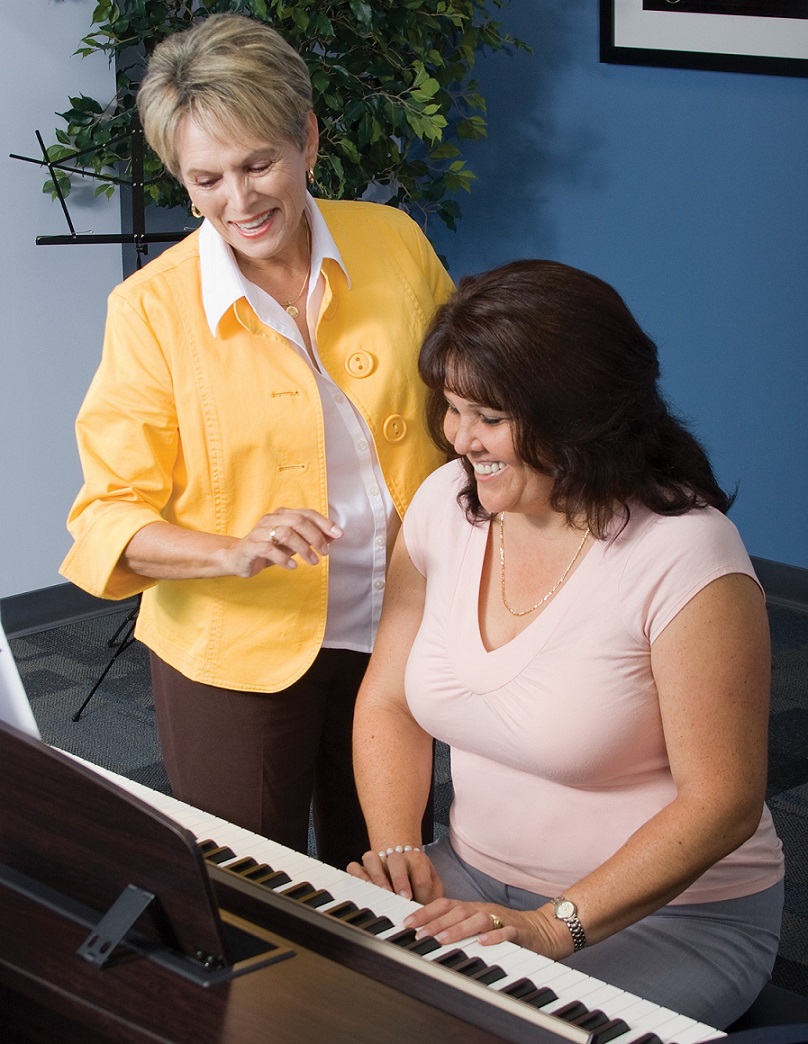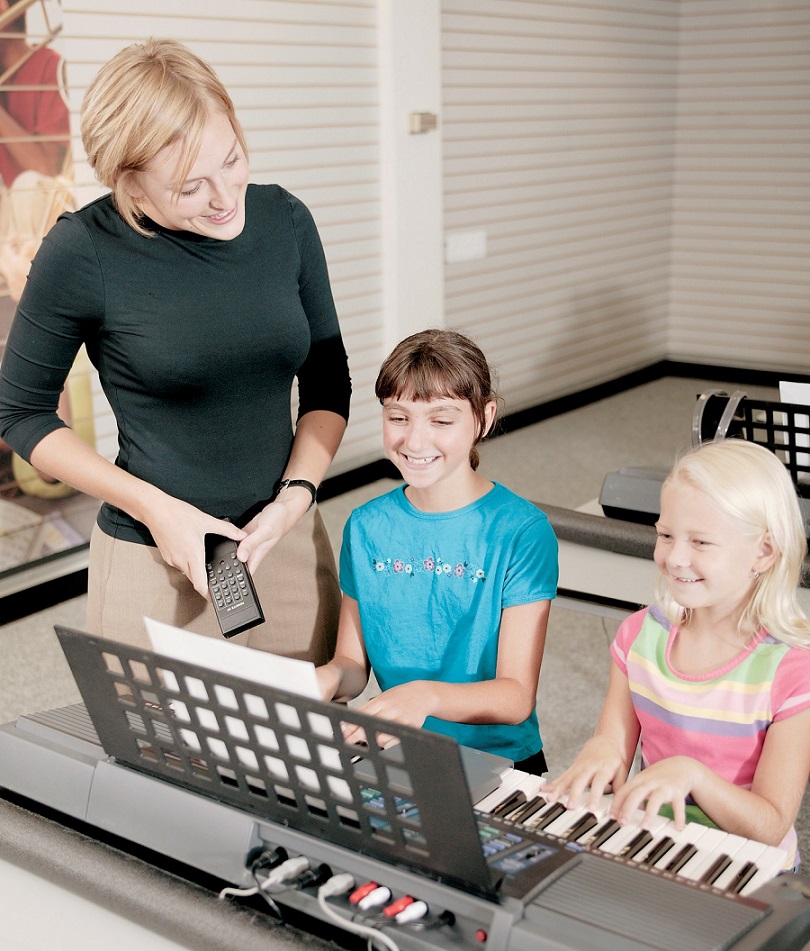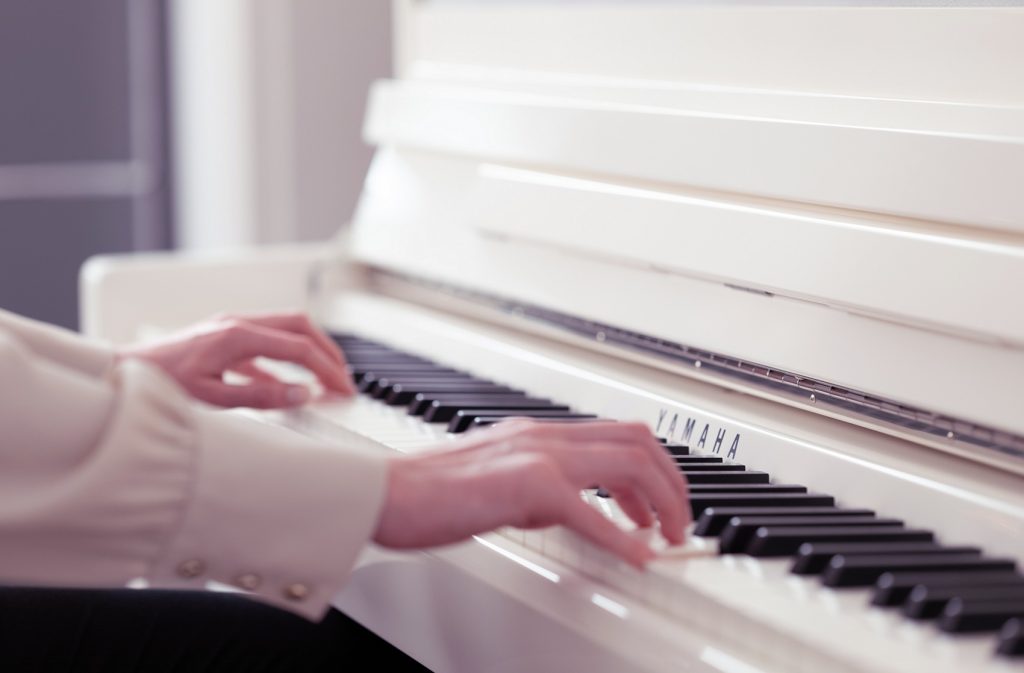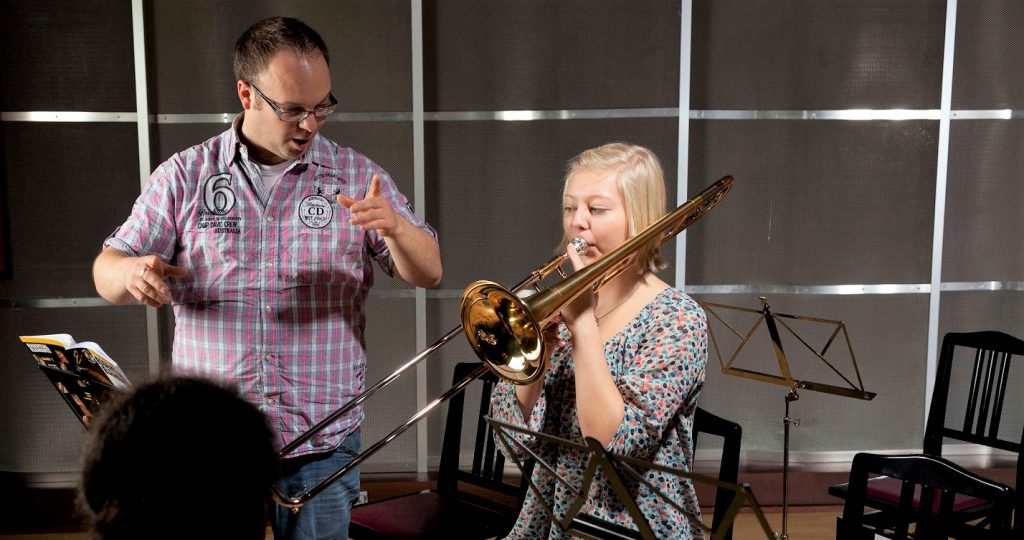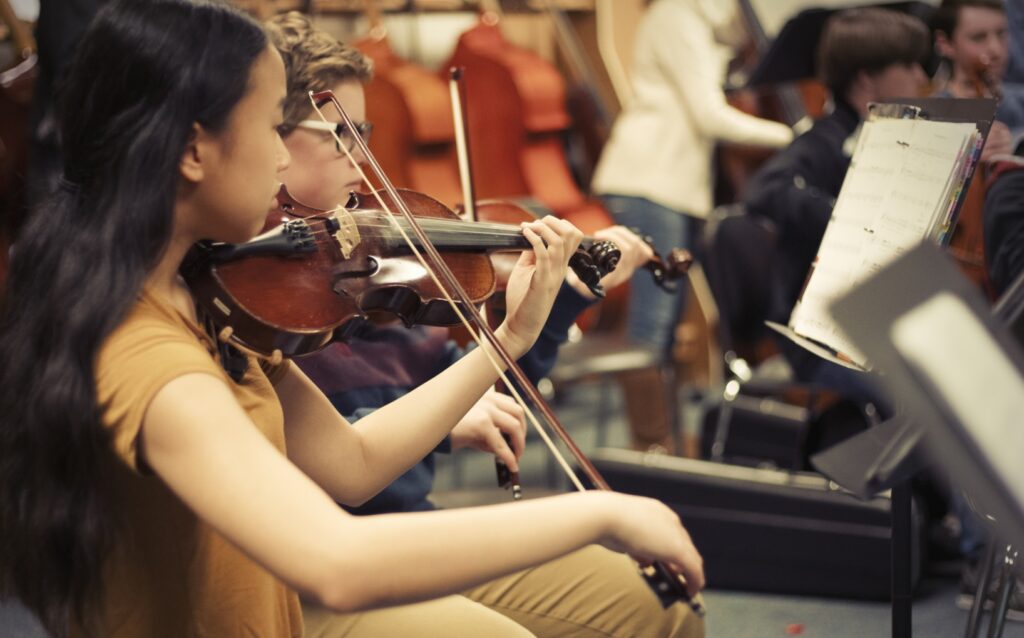Tagged Under:
The Teacher’s Role in Developing Good Practice Habits
From the first lesson, it is the teacher’s responsibility to provide students with the necessary tools to practice effectively at home.
In “The Different Types of Practice,” I presented several practice types, which teachers must understand in order to help their students develop effective practice habits.
From the very first piano lesson, it is the role and responsibility of the teacher to assign the work to be prepared between lessons and to provide students with the necessary tools to practice effectively at home.
For younger students, parental supervision, guidance and support during practice sessions are essential if they are to make good progress. Few students love to practice in the beginning, however, if parents and teachers are able to help students form good and regular practice habits, students are much more likely to achieve success in their music studies.
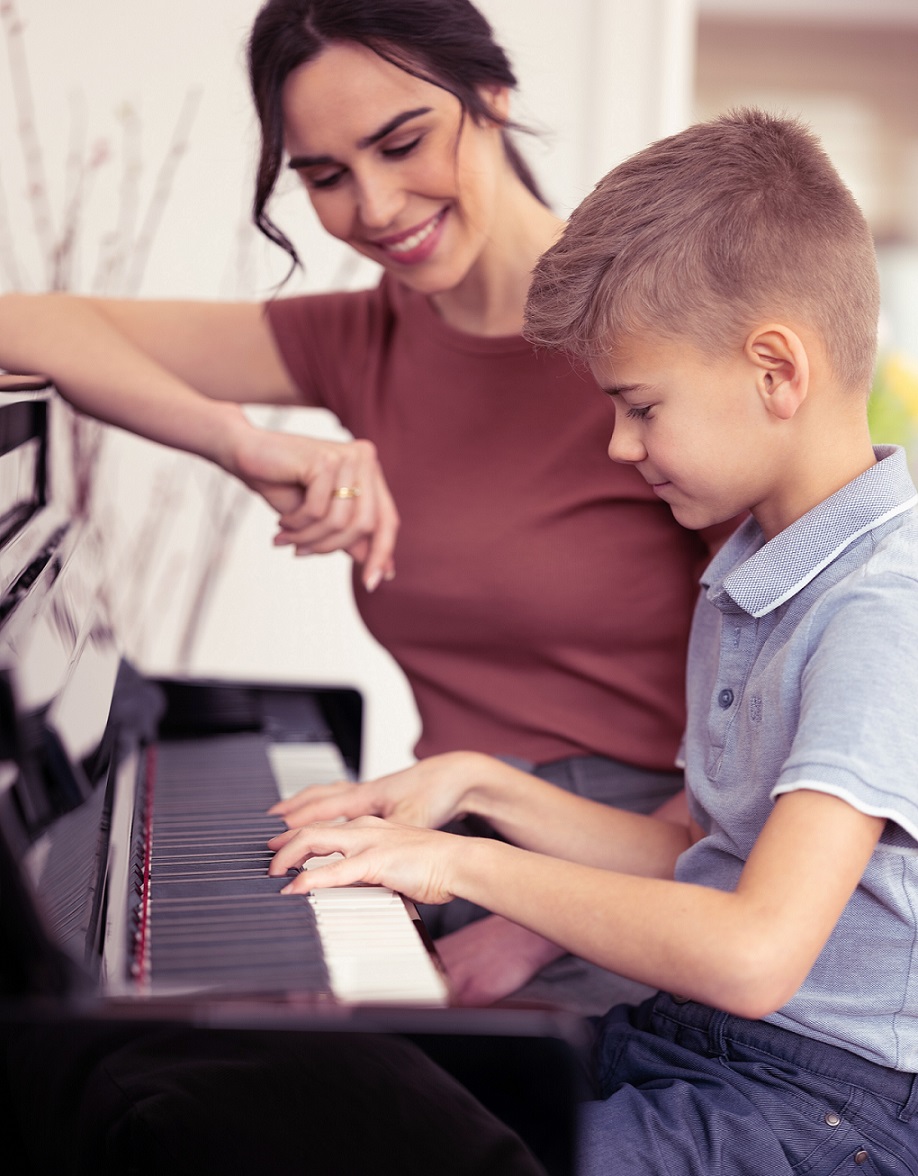 In the article “Not All Practice Makes Perfect: Moving from naive to purposeful practice can dramatically increase performance,” Dr. K. Anders Ericsson (1947–2020) and Robert Pool note the importance of the role of an expert teacher or coach in helping accelerate a student’s progression to expertise. In their view, having a teacher who is already familiar with the obstacles a student might encounter is invaluable to student success because the teacher can suggest ways to overcome such challenges. However, novice music teachers often assign homework to be practiced without offering any practice strategies or much in the way of practice advice to their students.
In the article “Not All Practice Makes Perfect: Moving from naive to purposeful practice can dramatically increase performance,” Dr. K. Anders Ericsson (1947–2020) and Robert Pool note the importance of the role of an expert teacher or coach in helping accelerate a student’s progression to expertise. In their view, having a teacher who is already familiar with the obstacles a student might encounter is invaluable to student success because the teacher can suggest ways to overcome such challenges. However, novice music teachers often assign homework to be practiced without offering any practice strategies or much in the way of practice advice to their students.
In the article, “Productive Practicing,” eminent piano pedagogue Robert Pace (1924–2010) outlines a number of excellent suggestions aimed at guiding teachers to better help their students accomplish more during practice sessions. Teaching our students to do more than simply practice using repetition but to play with musical thought and concentration can make a huge difference.
In my experience, ineffective practice can lead to mediocre playing as well as a general lack of enjoyment as a result. As such, I have found that students often give up music study altogether because they do not know how to get over the next hurdle or plateau in their practice. How do we get our students to practice? What do we get them to do during their practice time in order to make progress?
Perfect Practice Makes Perfect
In their oft-cited study, “It’s Not How Much; It’s How: Characteristics of Practice Behavior and Retention of Performance Skills,” music educators, Robert Duke, Amy Simmons and Carla Davis Cash make it clear that it is the proportion of correct repetitions in relation to total number of repetitions undertaken during a practice session that translates into playing accurately with consistency.
To this point, we might have a student who plays poorly during the lesson say, “I played it much better at home.” I respond by asking, “Which time was it better, and how many times did you play it to its best?” More often than not, the student made many errors in his or her practice, often through trial-and-error, or naïve, repetitions, only to finally arrive (often by luck) at an accurate rendering of the passage in question. As such, the student believes that “practice makes (or has made) perfect.”
However, this old maxim is untrue. Let’s say the student played the passage 20 times with the first 19 times being inaccurate and the last iteration was finally played cleanly. The chances that the student will play this passage correctly again, especially in the context of a lesson where he or she is more self-conscious than at home, is exceedingly unlikely. As such, “practice makes (or has made) the inaccuracy permanent.”
With this in mind, the old maxim should perhaps be amended to more correctly state that “perfect practice makes perfect.”
Craft a Practice Plan
One of the most effective ways to improve the quality of our students’ practice is to help them craft an effective practice plan. Such a plan should not only include all of the materials to be practiced and activities to be undertaken, but also the structure or organization of each practice session, time spent on each item or activity, as well as the specific practice goals and strategies to achieve them to be implemented in every instance. In fact, the quality of the practice to be done is more important than the quantity or amount of time spent practicing in total.
To help my students foster productive practice habits more consistently, I have created a practice planning template with sample strategies and more that I use in my studio. When I first use this with my students, we fill it in together. Over time, I encourage my students to create their weekly practice plan by themselves because my goal is to instill independence and empower them to be self-reliant. Pace wrote, “The best teachers help students learn to teach themselves, enabling them to progress beyond their mentors’ expertise and to continue learning for the rest of their lives.” Indeed, this is certainly a noble goal, and one I am hoping to achieve with my students.
For additional ideas about creating effective practice plans, Réa Beaumont’s article “Take Note: Developing an organized practice system for piano lessons” in Clavier Companion magazine is a superb resource.
Geoffrey Tankard provides excellent examples of practice time tables and how to effectively distribute a student’s practice time in the chapter on “Practicing” in his book, “Pianoforte Diplomas & Degrees” (see pages 49-50). In addition, Tankard provides a “suggested practice chart for covering 1 hour a day [of technique] for six days [per week]” on page 3 of his comprehensive technical exercise manual written with Eric Harrison, “Pianoforte Technique on an Hour a Day.”
Teachers can also find innumerable online templates and utilize countless apps to help their students better structure and organize their practice sessions.
Monitor Practice Sessions
Another way that teachers can help their students improve their practice habits is to monitor their students’ actual practice sessions. Due to the COVID-19 pandemic, it is easier than ever for teachers to check in with their students via Zoom, Skype or FaceTime. An occasional practice check-in during the week is brief and helps keep students accountable and considerate of their practice habits. Similarly, at monthly group lessons at my home, I always incorporate a portion of time specifically dedicated to supervised practice. I am able to do this easily with a small group of students using one acoustic and two digital instruments.
Perform as Much as Possible
In addition to utilizing practice plans and monitoring and supervising students’ practice time, I am a big proponent of having my students perform as much as possible in order to develop confidence on stage and a performance mindset. Since it can be hard to find and secure an audience, a simple way to simulate the sense of a performance is to record ourselves.
In preparation for a recital, competition or music exam, my students will sometimes send me daily videos or audio recordings of themselves playing for several weeks in advance. Not only do I send them feedback, I also have them listen and critique themselves. In these ways, they become increasingly used to performing while honing their own critical listening and analytical skills.
Regularity versus Time
And finally, it is important that I make it clear to my students that the regularity of their practice is more important for their progress than the total amount of time they spend practicing during a given period. Building regularity helps to foster a habit.
If students practice at a similar time each day, the practice habit is much more likely to stick. In addition, less time spent practicing in total every day will probably yield better results than one long day of practice each week. The analogy of physical exercise can be helpful in this regard: If we only work out for two hours one day per week there will be some benefit. However, if we exercise for 10 minutes each day for a total of 70 minutes, wouldn’t the physical benefit be greater even though we have spent less time exercising in total?
In my article, “12 Practice Tips, Suggestions and Strategies,” I present practical guidelines that music educators can employ to help students practice more effectively.
Sources and Resources
- Beaumont, Réa. “Take Note: Developing an organized practice system for piano lessons.” In Clavier Companion, May/June 2011, 56-58.
- Duke, Robert, Simmons, Amy L., and Cash, Carla Davis. “It’s Not How Much; It’s How: Characteristics of Practice Behavior and Retention of Performance Skills.” Journal of Research in Music Education 56, no. 4, 2009: 310-21.
- Ericsson, Anders and Robert Pool. “Not All Practice Makes Perfect: Moving from naive to purposeful practice can dramatically increase performance,” in Nautilus, April 21, 2016.
- Pace, Robert. “Productive Practicing,” Keys, Jan/Feb 1995: 1-3.
- Tankard, Geoffrey and Eric Harrison. “Pianoforte Technique on an Hour a Day.” London: Novello, 1960.
- Tankard, Geoffrey. “Practicing.” In “Pianoforte Diplomas & Degrees.” Kent: Elkin, 1979, 49-62.










